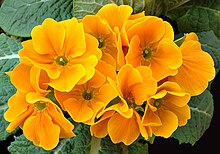Herbal Medicine
Herbal Medicine
Biological background


All plants produce chemical compounds as part of their normal metabolic activities. These are divided into primary metabolites, such as sugarsand fats, found in all plants, and secondary metabolites, compounds not essential for basic function found in a smaller range of plants, some useful ones found only in a particular genus or species. Pigments harvest light, protect the organism from radiation and display colors to attract pollinators. Many common weeds, such as nettle, dandelion and chickweed, have medicinal properties.
The functions of secondary metabolites are varied. For example, some secondary metabolites are toxins used to deter predation, and others are pheromones used to attract insects for pollination. Phytoalexins protect against bacterial and fungal attacks. Allelochemicals inhibit rival plants that are competing for soil and light.
Plants upregulate and downregulate their biochemical paths in response to the local mix of herbivores, pollinators and microorganisms. The chemical profile of a single plant may vary over time as it reacts to changing conditions. It is the secondary metabolites and pigments that can have therapeutic actions in humans and which can be refined to produce drugs.
Plants synthesize a bewildering variety of phytochemicals but most are derivatives of a few biochemical motifs.
- Alkaloids contain a ring with nitrogen. Many alkaloids have dramatic effects on the central nervous system. Caffeine is an alkaloid that provides a mild lift but the alkaloids in datura cause severe intoxication and even death.
- polyphenol, also known as phenolics, contain phenol rings. The anthocyanins that give grapes their purple color, the isoflavones, thephytoestrogens from soy and the tannins that give tea its astringency are phenolics.
- Terpenoids are built up from terpene building blocks. Each terpene consists of two paired isoprenes. The names monoterpenes,sesquiterpenes, diterpenes and triterpenes are based on the number of isoprene units. The fragrance of rose and lavender is due to monoterpenes. The carotenoids produce the reds, yellows and oranges of pumpkin, corn and tomatoes.
- Glycosides consist of a glucose moiety attached to an aglycone. The aglycone is a molecule that is bioactive in its free form but inert until the glycoside bond is broken by water or enzymes. This mechanism allows the plant to defer the availability of the molecule to an appropriate time, similar to a safety lock on a gun. An example is the cyanoglycosides in cherry pits that release toxins only when bitten by a herbivore.
The word drug itself comes from the Dutch word "droog" (via the French word Drogue), which means 'dried plant'. Some examples are inulinfrom the roots of dahlias, quinine from the cinchona, morphine and codeine from the poppy, and digoxin from the foxglove.
The active ingredient in willow bark, once prescribed by Hippocrates, is salicin, which is converted in the body into salicylic acid. The discovery of salicylic acid would eventually lead to the development of the acetylated form acetylsalicylic acid, also known as "aspirin", when it was isolated from a plant known as meadowsweet. The word aspirin comes from an abbreviation of meadowsweet's Latin genus Spiraea, with an additional "A" at the beginning to acknowledge acetylation, and "in" was added at the end for easier pronunciation."Aspirin" was originally a brand name, and is still a protected trademark in some countries. This medication was patented by Bayer AG.